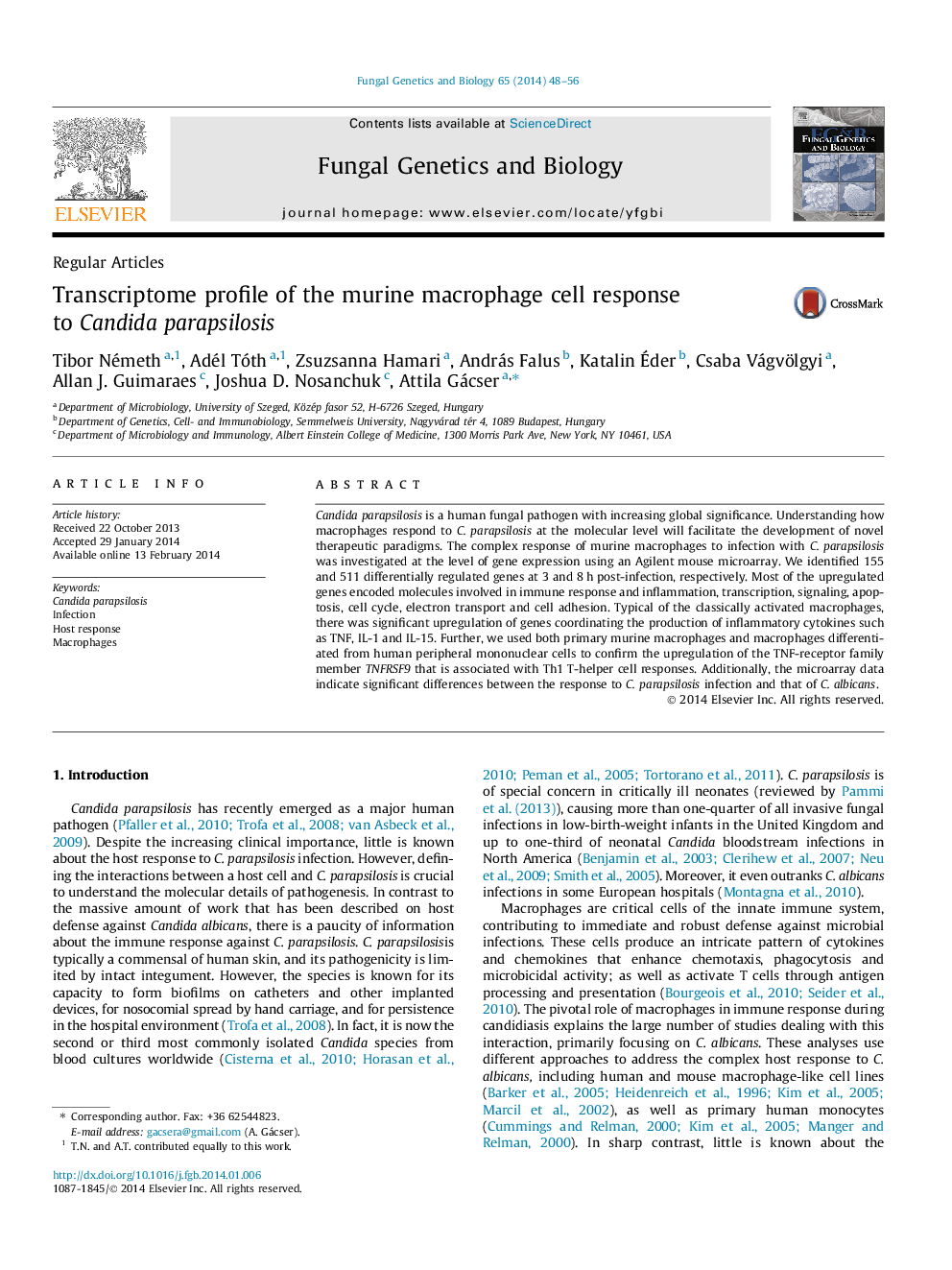| Article ID | Journal | Published Year | Pages | File Type |
|---|---|---|---|---|
| 2180806 | Fungal Genetics and Biology | 2014 | 9 Pages |
•Transcription in mouse J774.2 cells was examined in response to Candida parapsilosis.•Microarray analysis identified a high number of differentially regulated genes.•Many of the up-regulated genes are involved in inflammation and cytokine activity.•TNFRSF9 was highly expressed both at the mRNA and protein level upon stimulation.•Differences were found between the response to C. parapsilosis and C. albicans.
Candida parapsilosis is a human fungal pathogen with increasing global significance. Understanding how macrophages respond to C. parapsilosis at the molecular level will facilitate the development of novel therapeutic paradigms. The complex response of murine macrophages to infection with C. parapsilosis was investigated at the level of gene expression using an Agilent mouse microarray. We identified 155 and 511 differentially regulated genes at 3 and 8 h post-infection, respectively. Most of the upregulated genes encoded molecules involved in immune response and inflammation, transcription, signaling, apoptosis, cell cycle, electron transport and cell adhesion. Typical of the classically activated macrophages, there was significant upregulation of genes coordinating the production of inflammatory cytokines such as TNF, IL-1 and IL-15. Further, we used both primary murine macrophages and macrophages differentiated from human peripheral mononuclear cells to confirm the upregulation of the TNF-receptor family member TNFRSF9 that is associated with Th1 T-helper cell responses. Additionally, the microarray data indicate significant differences between the response to C. parapsilosis infection and that of C. albicans.
